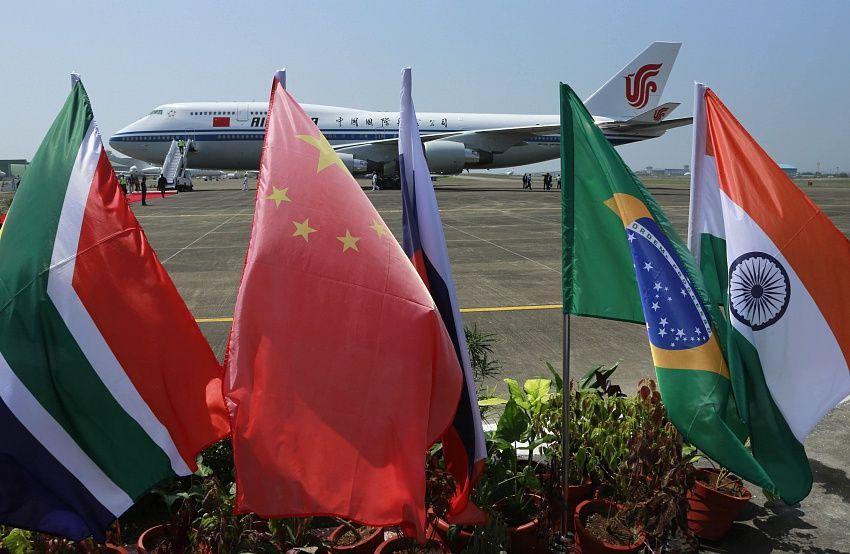Москва сделала геостратегический выбор поддерживать Минск.
Argentina, Mexico and South Korea Might Join BRICS – expert

In 2019 BRICS celebrates its tenth anniversary. Over the years, the group received both praise and criticism; the initial members list was expanded to include South Africa; there is also talk of further expansion. The development of political and economic relations of the group members and its importance for them in comparison with other integration blocks, as well as the timing of the next expansion of the group Eurasia.Expert discussed in an interview with the Councelor of the Argentine Council of International Relations (CARI) and Executive Director of CRIES (Coordinadora Regional de Investigaciones Económicas y Sociales) Andrey Serbin.
– The first BRIC summit took place on June 16, 2009 in Ekaterinburg. It has been 10 years since. How would you summarize the decade’s worth of BRICS activity?
– Despite Western criticisms, BRICS bloc shows an important progress since its creation in 2009. First of all, the group has established and developed more than thirty cooperation areas, including economy and finance; health; science, technology & innovation; security and business. Altogether, these initiatives have resulted in a relevant set of achievements, which aim to provide concrete benefits to the member countries societies.
Secondly, even since its creation, there was a debate around BRICS becoming an alternative to some of the existing global governance institutions such as the G7 or an attempt to reform and to improve the existing global economic governance. The recent conference at the Africa House in Washington in May 2019 shows that there is a disposition to coordinate its actions with other institutions such as the World Bank and the Asian Development Bank, and that the institutional architecture set within the BRICS with the creation of the New Development Bank (or BRICS Bank) and other mechanisms is helping to establish institutionally the importance of the group on the world stage. Oddly enough China did not participate actively at this conference, apparently because of its current trade conflict with the United States.
Thirdly, it is important to note that the main economic driving forces within the group are represented by the growing economies of China and India, and by the increasing – but difficult – coordination within the RIC (Russia, India, China) group, promoted since before the creation of the BRICS by the Russian Foreign Minister Evgeny Primakov. The RIC – as a political coordination force of the group – had its first formal meeting of Head of States at the G20 summit in Buenos Aires in 2018, after several informal meetings in previous years. It is also important to note that the three members of RIC are also members of the Shanghai Cooperation Organization, which main concerns are focused on regional stability and fighting terrorism in Eurasia.
Even though India, China and Russia may disagree on a number of issues in Eurasia, there are areas where their interests converge, like, for instance, on Afghanistan. Primarily, none of them wants Afghanistan as a haven for terrorist activities. So, they could work together as part of the RIC to ensure stable peace in Afghanistan and by extension, in Central Asia and Eurasia. The trio – and the BRICS as a whole – could also contribute to creating a new economic structure for the world.
Together, the RIC countries occupy over 19% of the global landmass and contribute to over 33% of global GDP. All three are nuclear powers and two of them, Russia and China, are permanent members of the UN Security Council, while India aspires to be one. With other Eurasian countries they are building a new gravitational pole that counterbalances the United States and its allies in the international arena.
– What are the main achievements of the BRICS members in the trade and economic matters?
– BRICS is the group composed by the five major emerging countries – Brazil, Russia, India, China and South Africa – which together represent about 42% of the population, 30% of the territory and 18% of the global trade. The 10th meeting of the group in Johannesburg in 2018 made an appeal to increase intra-bloc trade, showing that it was still below the expectations of its members. In terms of trade between the BRICS, it represented, in 2002, an amount of €21 billion, a figure that in 2012 already amounted to €219.4 billion. However, the group it still lagging behind its potentialities, mostly because of the differences of scale of their economies and of their previous trade interactions.
Nevertheless, currently the economic driving force of the group is China which was benefiting from the globalization process to foster its own economic growth.
The strategic convergence and closer ties between China and Russia in Eurasia have helped to significantly increase their trade exchange, particularly in the areas of finance and infrastructure, arms sales, energy trade and cooperation, and technology. The commercial exchange between Russia and India could rise to the level of $30 billion in the next three or four years, according to several sources, but it is still well below its potential, notwithstanding a previous record of trade exchange.
China and India are increasing their trade and financial cooperation. At the eleventh meeting of the China-India Joint Group on Economic Relations, Trade, Science and Technology in 2018, Chinese Trade Minister Zhong Shan said that the volume of trade between China and India reached a record level of $84.4 billion in 2017, 20.3% more than the previous year. The accumulated investment of Chinese companies in India reached more than $8 billion, while India's investment in China grew 18.5% annually in the last three years.
Trade of the BRICS members with South Africa seems to be still limited, while China became the main trade partner of Brazil. However, as mentioned before, the general performance of the intra-bloc trade shows that it didn’t growth as expected, notwithstanding the appeals to increase intra-bloc trade and to their common mebership of different international organizations – from the Shanghai Cooperation Organization to the WTO.
– What challenges BRICS member states face today?
– The key challenges for the BRICS are related to several issues. First of all, to increase the commitments of its members to broaden and to consolidate the current institutional architecture through cooperation and institutional formal agreements and to increase intra-bloc cooperation and trade. Secondly, to work on the building of common approaches to deal with the changing world global governance and to contribute to its development and eventual reform. And thirdly, to integrate and address new issues in the group agenda, in accordance with the demands of its members.
In this regard, the recent Brazil government proposal of focusing on the fight of terrorism as one of the main issues for the next summit to be held in Brasilia, is in tune with the main issues of the agenda of the Shanghai Cooperation Organization and Russia, China and India as its most powerful members.
– What do you think will the future of the organization hold? Should we expect its expansion? What countries might join BRICS in the future?
– It is early to assess if the BRICS are ready for an expansion of the group, as it seems that the first task is to consolidate the group institutionally before inviting new members. However, there are already discussions about inviting México and Argentina from Latin America and there exist also the possibility of the incorporation of Arab countries in a BRICSA, which is still in a very early stage and depends of their capacity of putting their act together.
Another emerging economy that, according to several sources, could become a candidate for membership at BRICS is South Korea, particularly if there is a reunification or a closer economic relationship with North Korea.
– And what about Argentina? As far as I know, Argentina was interested in becoming a member, but the issue got delayed. What factors deter Argentina from completing the process?
– During the last two presidential periods, both Cristina Fernández de Kirchner and Mauricio Macri were promoting Argentina´s incorporation to the group.
Those initiatives were received initially with some reluctance from the BRICS members mostly because of its economic instability, but currently it seems that Argentina can become in the short term a new member, as there is political will both from the BRICS members and the Argentine government.
President Macri attended the Johannesburg Summit last year, Argentina is a close historical partner with Brazil in MERCOSUR and China is one of its most important trade partners, while the relations with Russia and India are improving and broadening, both on the diplomatic and the economic side. At the same time, Argentina can contribute with territory, population and economic opportunities to the group, even if on a different scale from Brazil. Argentine disposition to becоme a new member will probably not change after the October 2019 presidential election, as both the current government and the opposition are on the same page regarding this possibility. But again, this depends of support of the other members of BRICS.
– Does China give priority to the BRICS? Why does it feel so confident among the member states?
– China is the main economic driving force of the BRICS, but it has its own foreign policy objectives oriented towards the materialization of a “China´s Dream” and its main instrument for that aim and its global projection is the Belt and Road Initiative (BRI) which is not passively accepted by the other members of BRICS.
The BRI fosters a pragmatic economic cooperation on a win-win and mutually beneficiary basis for its adherents on a global level. Russia had an agreement around the “Greater Eurasia Project” to link the Eurasian Economic Union to the BRI, but didn´t become a member of the initiative, even if President Putin showed support attending the Second BRI Forum in Beijing.
India is reluctant to accept China´s expanding role in Eurasia and the BRI, looking for its own sphere of influence in Asia and Africa and keeping its links with the Indo-Pacific Quad. Brazil is closely tied to China by trade and investments but did not yet ask to be part of the BRI as other countries of Latin America and the Caribbean, starting with Panamá in 2017. Probably, the most receptive member to China´s BRI is South Africa.
Within this context, the BRICS are a less powerful mechanism than the BRI for China´s global interests, but it is still an important part of its global projection machinery, Beijing´s aspiration to expand its influence in multilateral forums and important markets, and the possibility of building an alternative global governance architecture in the midst of its trade war with the United States. In this regard, China´s appeal to a multipolar international system sounds more as the implementation a new bipolarity on different grounds.



